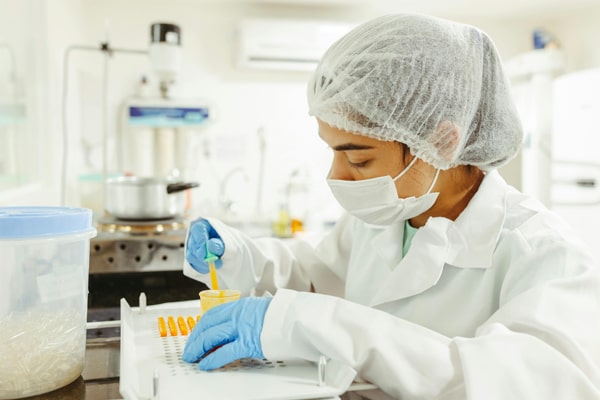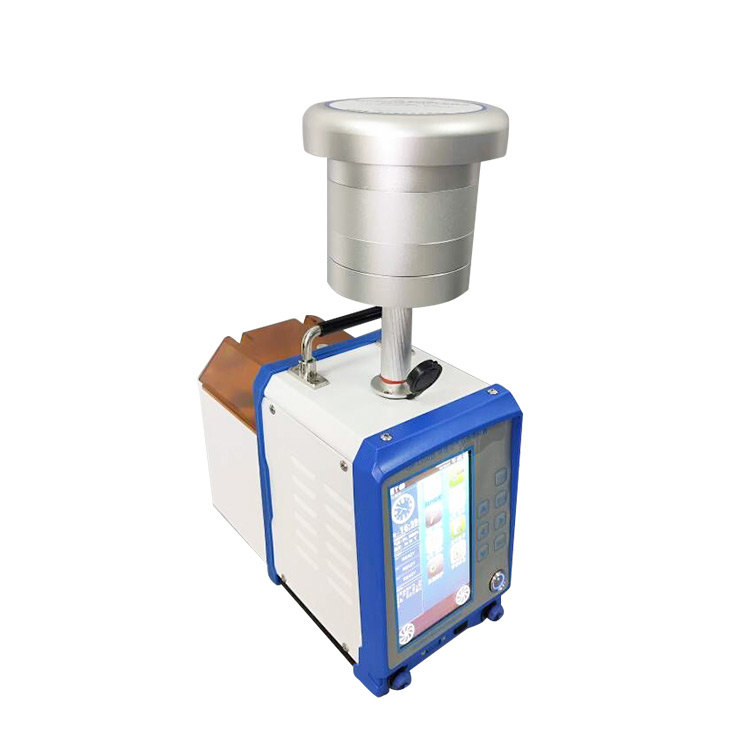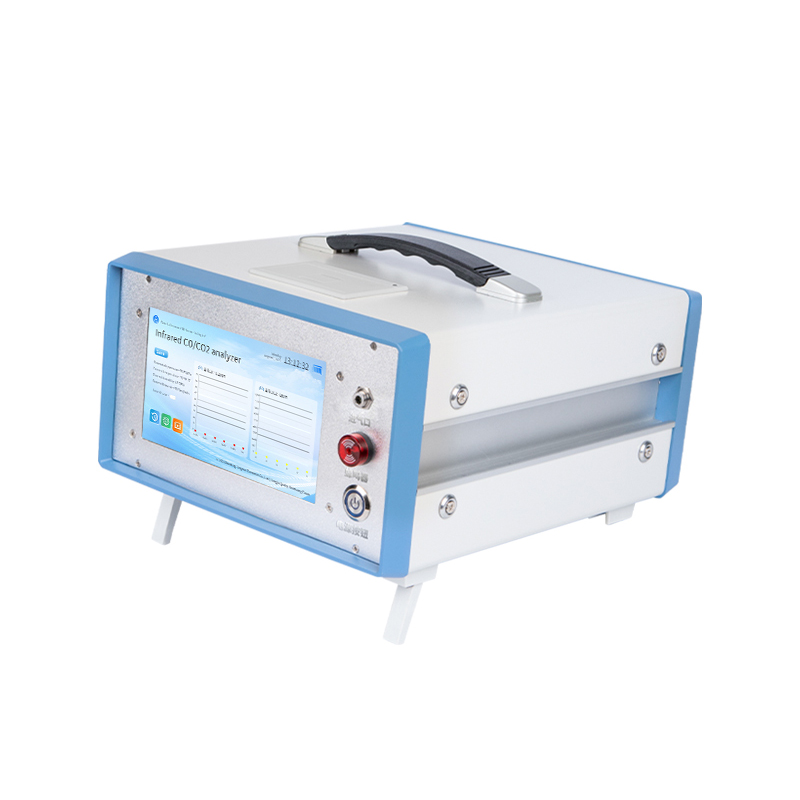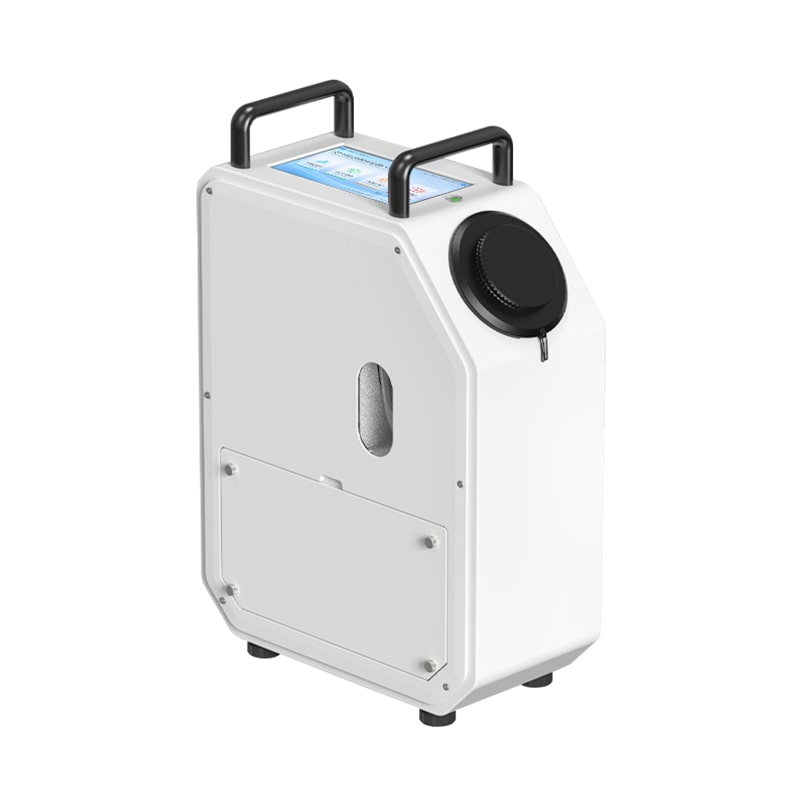Product Center
- Negative oxygen ion detector
- Dust particle counter
- Air Bacteria Sampler
- Biological aerosol detector
- Infrared CO/CO2 analyzer
- Microbial Air Monitoring Systems
- Microbial aerosol concentrator
- Environmental air comprehensive sampler
- Mercury meter
- Trace sulfur analyzer
- Bacterial Collector
- Quantitative sampling robot
- Emanometer
- Microbial limit tester
Solution for hygiene and environmental testing in the field of biopharmaceuticals
Source:Hengmei Environmental Sanitation Instrument Network Update time:2025-07-31 15:31:43
Biopharmaceutical production has strict requirements for clean environments, requiring dynamic monitoring of suspended particles, microorganisms, and biological aerosol pollution in the air. This plan integrates the Hengmei dust particle counter (particle detection), planktonic bacteria sampler (microbial activity monitoring), and microbial aerosol detector (comprehensive assessment of biological pollution) to build a real-time monitoring system covering clean rooms, production workshops, and key areas, ensuring compliance with GMP, ISO 14644 and other standards, and guaranteeing drug quality, safety, and production compliance.

Equipment selection and functional positioning
Hengmei Dust Particle Counter (HM-CL2)
Functional features:
Support six channel synchronous detection, covering the particle size range of 0.3-10 μ m, and real-time monitoring of suspended particle concentration.
Automatic determination of cleanliness level (ISO 14644 standard), suitable for static and dynamic environment verification.
Application scenarios:
Cleanroom static/dynamic environment verification, efficient filter leakage detection, pressure gradient monitoring.
Floating bacteria sampler (HM-KF2)
Functional features:
Based on Anderson's impact principle, actively collect airborne bacteria (≥ 1 μ m) with a flow rate of 100L/min.
Support online data recording and export, adapted to GMP dynamic monitoring requirements.
Application scenarios:
Dynamic microbial monitoring and pollution control at key operating points (such as filling lines) in Class A/B clean areas.
Microbial aerosol detector (HM-KWS)
Functional features:
Rapid detection of bioaerosols (bacteria, viruses, spores, etc.) in the air using ultraviolet fluorescence technology, with a response time of ≤ 10 seconds.
No need for cultivation, directly assess the risk of biological pollution.
Application scenarios:
Real time warning and sterilization effectiveness verification for high-risk areas such as cell culture rooms and vaccine workshops.
Monitoring scheme design
Division and focus of monitoring areas
A-level area (such as filling area, under laminar flow hood):
Monitor suspended particles (≤ 0.5 μ m), planktonic bacteria, and aerosols to ensure a sterile operating environment.
B-level zone (such as buffer zone, device interface):
Focus on monitoring suspended particles (≤ 5 μ m) and planktonic bacteria to control the risk of microbial diffusion.
C/D level areas (such as material transfer windows, changing areas):
Monitor suspended particles (≤ 35 μ m) and surface microorganisms to strengthen basic environmental control.
Monitoring parameters and frequency
Suspended particles:
According to the ISO 14644 standard, dynamic monitoring is conducted, with A-level areas recording every 15 minutes and B-level areas recording every hour.
Floating bacteria:
Continuous monitoring in Class A area and sampling every 2 hours in Class B area comply with the requirements of the Chinese Pharmacopoeia 2025 edition.
Aerosol:
Real time monitoring of high-risk areas, daily sampling of other areas, threshold setting based on historical data and risk assessment.
Environmental parameters (temperature, humidity, pressure difference):
Record every hour to ensure compliance with the standards of 18-24 ℃, 45% -65% RH, and ≥ 10Pa pressure difference.
Sampling point layout principle
A-level area: filling head, under laminar flow hood, personnel operating surface (0.8-1.5m above the ground), to avoid interference from the return air outlet.
B-level zone: optimize the points at the air supply outlet, return outlet, and equipment interface by analyzing the airflow pattern.
Key points: Personnel changing area, material transfer window, disinfectant preparation room, ensure full coverage of pollution sources.
Implementation steps and operating standards
Equipment calibration and verification
Hengmei particle counter: calibrated according to JJF1190-2008, with a flow error of ≤± 3% to ensure data accuracy.
Floating bacteria sampler: Verify the sampling flow rate (100L/min ± 5%) and impact efficiency (≥ 80%), and regularly replace the sampling head filter membrane.
Aerosol detector: Verify fluorescence response sensitivity through standard bacterial strains (such as ATCC 6633), calibrate wavelength and detection threshold.
Dynamic monitoring plan
Before production: Start the planktonic bacteria sampler and aerosol detector to predict environmental risks and ensure cleanliness meets standards.
In production: Hengmei particle counter continuously monitors pressure difference and particle concentration. In case of abnormalities, it triggers sound and light alarms and locks the contaminated area.
After production: Close key equipment, perform final disinfection and retest aerosol levels, and generate a final environmental report.
Data Analysis and Reporting
Integrate data from three devices, generate trend charts (such as the correlation between particle concentration and planktonic bacteria), identify pollution cycles and potential risks.
Activate CAPA (Corrective and Preventive Action) when exceeding the standard, trace the source of pollution (such as personnel operation, air conditioning system or material introduction).
Quality Control and Compliance Assurance
Personnel training and qualification management
Operators need to pass GMP basic training and equipment practical assessment, and hold certificates to work.
Regularly conduct specialized training on microbial identification and data analysis to enhance abnormal handling capabilities.
Data tracing and audit tracing
Hengmei equipment has built-in audit tracking function, which records operation logs, calibration records, and data modification traces, in compliance with FDA 21 CFR Part 11 requirements.
The data from the planktonic bacteria sampler and aerosol detector are automatically backed up to the cloud, supporting electronic signatures and hierarchical management of permissions.
Standard compliance verification
Suspended particles: comply with GB/T 6167-2007 and ISO 14644-1 dynamic monitoring standards.
Planktonic bacteria: comply with EU GMP Appendix 1 and the microbial limit requirements of the Chinese Pharmacopoeia 2025 edition.
Aerosols: Refer to the WHO Laboratory Biosafety Manual 4th edition and ISO 14698-1 for biological pollution control specifications.
Advantages and innovative points of the plan
Multi dimensional collaborative monitoring
Simultaneous detection of physical pollution (particles), biological activity (planktonic bacteria), and comprehensive risk (aerosols), covering the entire pollution chain.
Intelligent warning and response
The real-time alarm function of the aerosol detector reduces blind spots in manual inspections, and the air conditioning system is linked to automatically adjust the pressure difference and wind speed.
Compliant and efficient data management
Automatically generate electronic records that comply with GMP standards, support rapid auditing and batch release, and reduce compliance risks.
Through this plan, biopharmaceutical companies can systematically enhance their environmental monitoring capabilities, ensure that the entire production process complies with international standards, and provide solid guarantees for drug quality and patient safety.
Article address:https://www.environmentinstrum.com/solu/34.html
- Related products
- Related articles
-
07-31 2025
Dust particle detector: a precise ruler for environmental cleanliness
In the fields of precision manufacturing and life sciences, air cleanliness is the lifeline of produ···...
-
07-31 2025
Clean Guardian: Core Value and Application Analysis of Online Particle Counter
In modern industry that heavily relies on precision environments, a single speck of dust can shake t···...
-
10-24 2025
Intelligent Microbial Collection Instrument: For Sterility Testing in Pharma and Medical Devices
As a supporting equipment for disposable fully enclosed bacterial culture equipment, the intelligent···...
-
07-31 2025
Price Pattern and Purchasing Strategy of Microbial Air Samplers
In highly clean environments such as pharmaceutical workshops, operating rooms, and biological labor···...













